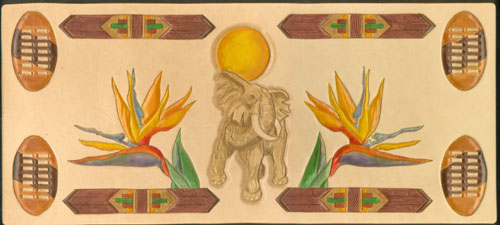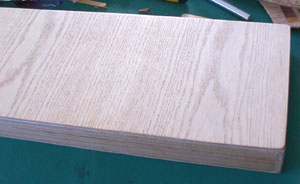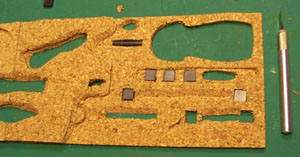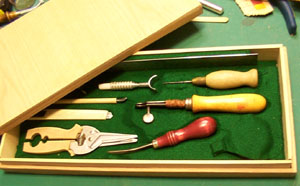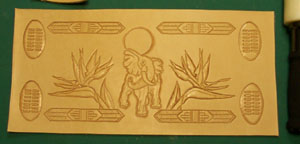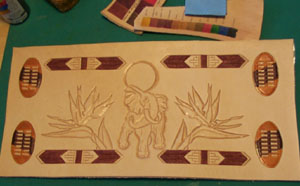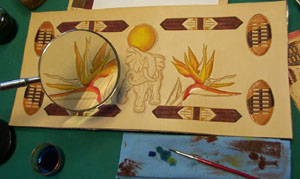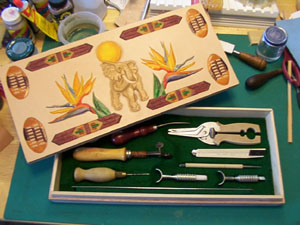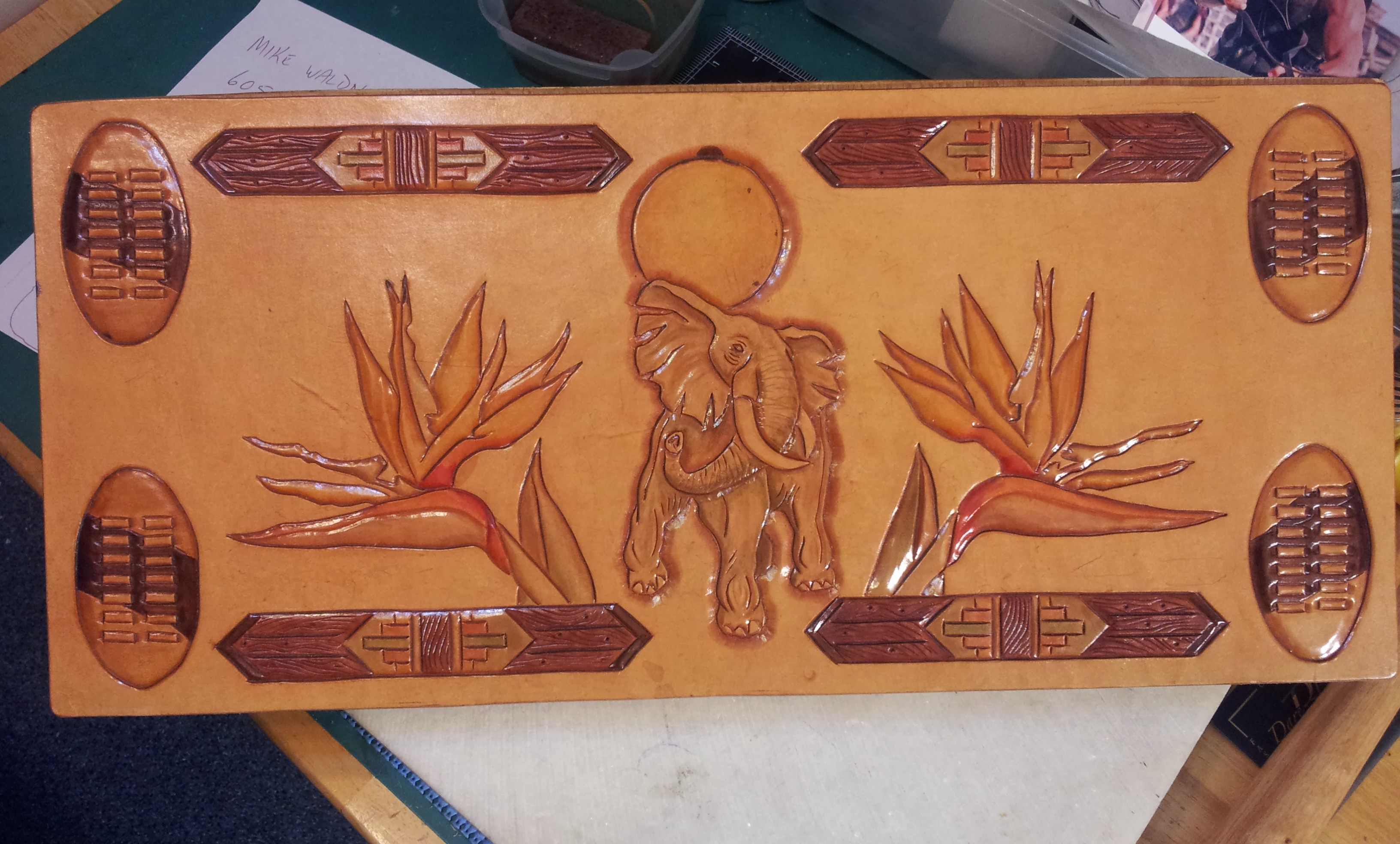Even among leatherworkers we hear this myth too often. Unnecessarily.
You can "become" artistic - you can make yourself artistic.
First let us look at how we can use more of our brain.
Our whole 20/21st century education and lifestyle teaches us to only use the left side of our brains - the side that reads, writes, does arithmetic, analyzes & deduces, keeps track of time and works with symbols for every concept.
We do leather with our right brains - the side that works with music, color, shapes, pictures and the scene around us. It shows us the whole forest and does not count how many leaves there are.
In most of us the left brain dominates very strongly, and that makes us feel less artistic. I used to ask a class of 120 computer programming students each to draw and eye and then hold it up. It always seem to be a variation of this:
As craftsmen and women, I know you have all experienced the opposite: when your left brain goes for a rest and your right brain drives things. This happens when you get so engrossed with the shapes you are carving or the colors you want to apply, that the rest of the world fades away and you loose track of time. It almost feels as if you are in a trance. It also irritates you when somebody disturbs you.
This is a perfectly normal creative and artistic mode to be in. All we need is to learn to switch this mode on more easily. For this I want to refer you to an excellent book on the subject by Betty Edwards - Drawing on the Right Side of the Brain.
[Do yourself a favor and go and have a look at the website where you will see about her books and online courses: http://www.drawright.com/ I promise you will be amazed!]
In this book she teaches ANYONE to draw and sketch"like an artist".
To enable us to make use of this mode of thinking, another myth must be dispelled:
NO artist takes a clean sheet of paper and promptly draws a beautiful picture from his imagination.
If you do see this, the artist is drawing something they have drawn many times before, so they are using a recipe.
Instead, let us see how Tim, an imaginary artist, goes about drawing a new design of leaves for tooling on a leather picture frame.
Tim first finds a few real leaves in the garden and / or goes through his file of reference material he had accumulated over some years. then he looks in the folder on his computer called "Leather Design Inspiration" to see if he has any images with leaves there.
Tim then makes a few preliminary sketches of the leaves from the garden. He takes note of the direction of the veining, and their general shapes. Time then draws two parallel lines for the frame, draws a flowing curving line between them and sketches the leaf shapes into those lines, trying to follow the flowing line with the directional lines on the leaves. Finally Tim transfers the successful design elements onto a clean sheet as a usable design.
All of this time Tim is in right brain mode, not even aware that the boss has called him a few times for dinner.....
Coming up with a nice design is like photography - it takes a lot of practice, a lot of patience, and a few attempts, before you have that perfect masterpiece.
Another way to help our brains, is by regular rest / giving your brain a break. Your eyes are directly linked to your brain - some physiologist have even suggested that your eyes are part of your brain. So by giving your eyes regular breaks, you are directly benefiting your brain too.
The surest way to do this is to look up and out a window - as far as you can possibly see. As yet unexplained, this works even better if you can look at trees or any natural green landscape.
In a study in the USA it was found that business men who worked with numbers all day long (left brain function), solved a lot of their business problems while driving home. Upon investigation it was found that driving activates your right brain - you cannot drive a car with your left brain (you do not, for example sit and think "the car has to move 15 degrees to the North North East, and to do that the steering wheel has to turn left by 4.5 degrees, an action that means my left hand needs to lower 3/64 inches down and my right hand 3/64 inches up". Your right brain can just see the way the car goes and adjust the wheel - all by itself.
So with both hemispheres active, solutions come more readily to mind.
Therefor, by stimulating the right brain when doing leatherwork, we make our brains whole gain. By creating with our hands, we recharge what we lose to the rat-race and social media.
In our ever increasingly stressed lives, sanity asks that we escape as often as possible - and leatherwork is a good place to escape to. Placing yourself in that right-brain-trance helps you become whole and repaired again.
[Written circa 1995 - Johan Potgieter]












